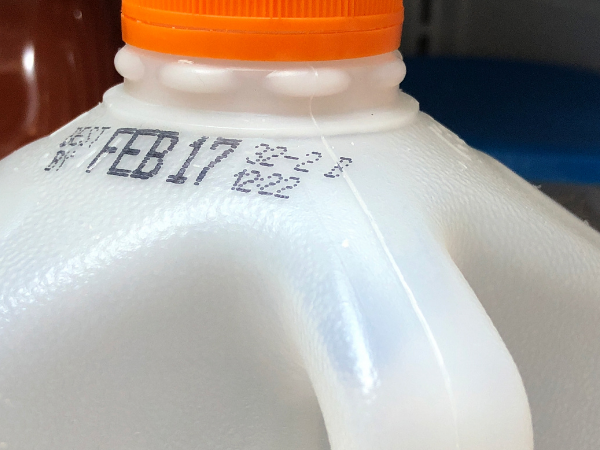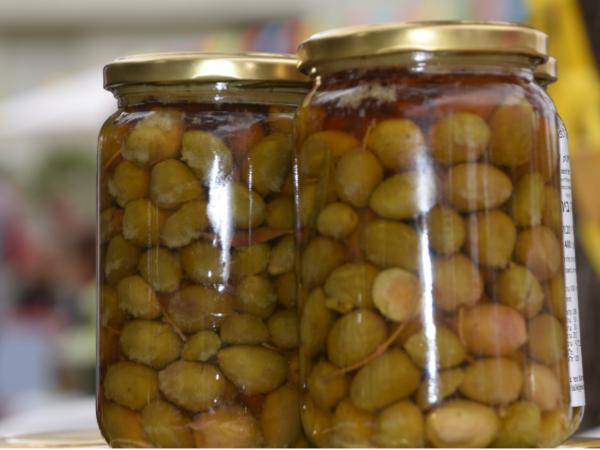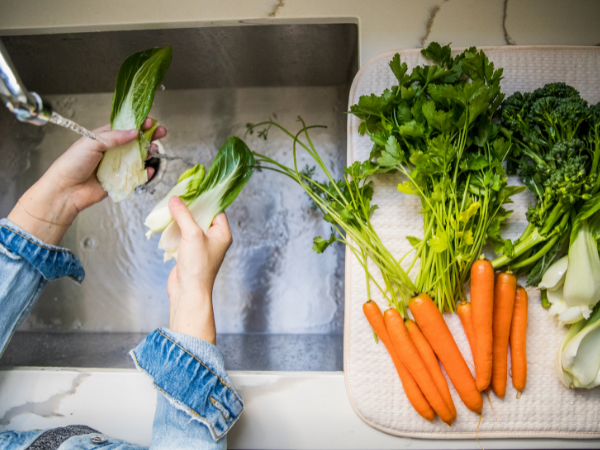Offered in Partnership With:
Vindeket Foods

Benefits of handling food in safe and proper manner:
- It helps to maintain the quality and nutrient content of the food products we purchase.1
- It helps prevent unnecessary food spoilage and waste which helps save money in the long run.1
- It helps reduce the risk of foodborne illnesses caused by bacterial growth that results from poor storage and handling of food.1
Taking the time to learn safe food practices can help improve overall health. This page dives deeper into the following food safety guidelines:
- Food selection and understanding package dates
- Food storage of shelf-stable, refrigerated, and frozen foods.
- Handling and storage of fresh produce
Package Dates Explanations
- Expiration date – Almost nothing has a set expiration date. Items such as infant formula however should NOT be consumed past their expiration date. Stores will therefore not distribute these items past this date.2 Items such as prescription and over-the-counter medicines may also be considered risky to consume past their expiration date due to changes in chemical composition and a reduction in potency.3 It is therefore advised to properly discard expired or unneeded medication. Perishable foods once frozen and kept continuously frozen should be safe to eat indefinitely even past the expiration date.2 They may however lose quality over time.2
- Pack date – This date can be found on canned foods, crackers, cookies and spices.2 This is the date the item was packed and usually the item can last a long time past this date.2
- Sell by date – This date can be found on refrigerated foods such as milk, yogurt, cottage cheese, eggs, and packaged salad mixes.2 Stores are required to sell items before this date and will donate food stuff as they approach the date.2 If the item has been properly handled it should still be of good quality and safe to eat.2
- Use by date – This date can be found on baby food, crackers, cookies, cereals and other dry, shelf stable foods.2 This is the manufacturer’s recommended date for how long the item is at peak quality.2 Nutrients may begin to be lost past this date, but the item should still be safe to use.2

Food Storage
When purchasing food products, be mindful to buy the kinds and amounts of food you can properly store.1
Some important storage tips to keep in mind for your way home from the store include:
- Placing perishable good in the coolest part of your car and being prepared with an insulated container if the trip home is longer than an hour.1
- Place any raw meats, poultry and seafood purchased in individual plastic bags to prevent contamination of foods that do not require cooking.1

Once you get home, here are more detailed tips on how to store the items you have purchased:
- The majority of shelf-stable goods such as canned, boxed and bagged food items can remain safe to consume for several days, months or years past the date on the package.2
- Examine your package for damages to ensure that they are still safe to consume. If an item is too damaged, do not consume it. Some key points are as follows2:
- Don’t consume food from jars or cans if the container is:
- Leaking or stained
- Swollen
- Rusty
- Badly dented, crimped or pinched
- Cracked
- Has a foul odor
- Safety and vacuum seals are broken, missing or popped.
- Lids are loose or missing
- Foods exhibit changed color or odor – do not attempt to taste suspicious foods!
- Don’t consume food from boxes if:
- The inside bag is torn, leaking, has moldy or foreign items inside, or has ripped seals.
- Boxes without inside bags are open or torn, have live or dead insects, webs or droppings or are stained or wet. Depending on length and quality of storage of these items, rodent infestation may occur leaving behind droppings or nests.4 This can pose a risk for Hantavirus and items containing any of this should be discarded.4
- Don’t consume food from jars or cans if the container is:
Click here to learn more about the Shelf Life of Food Bank Products.
Foods Purchased Refrigerated or Frozen
Refrigerating and freezing food helps maintain the quality and shelf-life of perishable foods. Keep in mind the following general key practices:
- Store eggs in their original carton to help prevent them from breaking. This also prevents them from absorbing smells from your refrigerator.2
- Leave space for air to circulate between items in your refrigerator.2
- If food remains continuously frozen, it will last much longer than if it is exposed to changing temperatures.2
- Cool all foods before packaging them for refrigeration or freezing.5
- Some foods do not freeze well due to changes in quality such as texture and flavor. These include:5
- Onions which tend to change flavor when frozen
- Vegetables with a high-water content such as lettuce, tomatoes, celery, cucumber, parsley and radishes which become limp with freezing.5
- Half and half, sour cream and cottage cheese may become grainy and separate when frozen. Buttermilk and yogurt will react the same way but they can still be used for baking.5
Click here to learn more about freezing food
Handling and Storage of Fresh Produce
Fresh fruits and vegetables may need varying lengths and methods of storage.
To wash or not to wash? The battle on whether to wash or not wash fresh produce is because of this – not washing the dirt off these items may introduce harmful microorganisms into one’s kitchen whereas washing may quicken the molding and rotting process of these items.6 Here is what to keep in mind:6
- We recommend washing all produce before consuming them!
- If washing before storage, thoroughly dry the fruits and vegetables with a clean paper towel.
- If not washing before storage, be sure to shake, rub or brush any garden dirt with a paper towel or soft brush outside before bringing the items into your kitchen.
- Do not wash berries until ready to consume.
- Be sure to routinely check fresh produce for signs of spoilage such as molding and toss out if spoiled.

Some helpful general storage tips for fresh produce:
- Storing fresh produce in plastic bags/containers minimizes the risk of contaminating other items in your refrigerator.6
- Most fruits and vegetables have the best quality when kept refrigerated. There are, however, some exceptions2:
- Tomatoes taste best if not refrigerated. Refrigeration can cause them to become mealy.
- Bananas should not be refrigerated unless fully ripe, and then they should be used within 1-2 days. Refrigeration will cause banana skin to blacken, but the fruit will not ripen while cold.
- Unripe fresh apples, mangoes, and stone fruits such as plums and peaches can be stored at room temperature, but these items should be refrigerated as they ripen.2
- Hardy vegetables like onions, garlic, potatoes, sweet potatoes, and winter squash can be stored in cool, dark places outside of the cooler.2
Extending your produce even further: repurpose it

References
- Kendall P, Diamond N. Food Storage for Safety and Quality. Colorado State University Extension. 2012 https://extension.colostate.edu/topic-areas/nutrition-food-safety-health/food-storage-for-safety-and-quality-9-310/. Accessed October 29, 2021.
- Greater Pittsburgh Community Food Bank. Shelf Life of Food Bank Products. Colorado State University Extension. https://www.cmu.edu/student-affairs/resources/cmu-pantry/shelf-life.pdf. Updated May, 2018. Accessed October 29, 2021.
- Don’t Be Tempted to Use Expired Medicines. U.S. Food and Drug Administration. https://www.fda.gov/drugs/special-features/dont-be-tempted-use-expired-medicines. Accessed November 11, 2021.
- Brennand CP. Food Storage, Rodents, and Hantavirus. Utah State University Cooperative Extension. https://digitalcommons.usu.edu/cgi/viewcontent.cgi?article=1533&context=extension_curall. Accessed November 15, 2021.
- Garden-Robinson J. Food Freezing Guide. North Dakota State University Extension. 2019. https://www.ag.ndsu.edu/publications/food-nutrition/food-freezing-guide. Reviewed February 2019. Accessed October 29, 2021.
